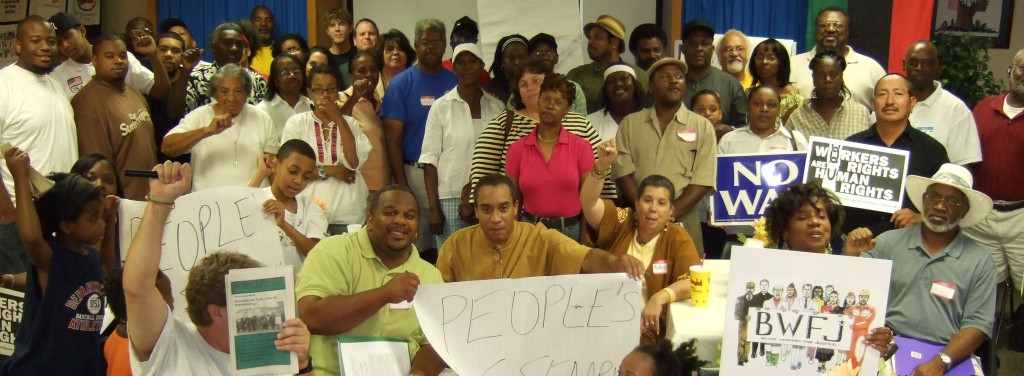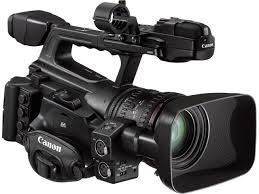by Saladin Muhammad
The Obama campaign and his election as the next US president, has helped to create a level of enthusiasm and hope among working class Blacks, people of color and sectors of the general working class that is beginning to break their apathy, cynicism and lack of confidence in challenging and changing conditions of oppression and exploitation in society. We can see the energizing affects on many BWFJ members and base areas that have been less active in the past.
The Obama campaign gave everyday people a sense of inclusion and control in shaping the organizational base and issues of the campaign. It was not the traditional Democratic Party campaign where the local party structures controlled the flow and resources of the campaign.
The Peoples Assemblies represent one of the new organizational and political forms that began during the Obama campaign that now must go forward to work to unite and develop the mass base and movement needed to promote a people’s democratic agenda as part of the mandate associated with this historical election and victory.
The state of the US and global economy and political situation, will make the implementing of major changes that begin to address the needs of the majority of the people, especially the most oppressed sectors, nearly impossible without a peoples movement that organizes and pushes for these changes.
It is very important that the demands and struggles for changes inside the US, be carried out within an international context, so that they don’t come about at the expense of the continued oppression and exploitation of peoples in other countries.
This raises the importance of our struggles having an international human rights framework to help shape the scope of demands, tactics and alliances that are necessary for waging the struggles in this period.
Summing up the Basics and Where We Go from Here
It’s important to assess if our work in building Peoples Assemblies had an identity within this campaign that focused on mobilizing particular constituencies and struggles.
There was room for organizations with varying views on the positions projected by Obama, to participate in and maintain their independent organizational identities. In fact, some organizations projected particular slogans that gave political meaning to their involvement such as “Take Back the Vote”, a campaign by the Miami Workers Center in Miami Florida. They brought their organizational colors, culture, local demands and developed targets, goals and broad organizational forms for their work in the campaign. This was their way of using the campaign to help build more long term peoples organization and political vision in preparation for the new phase of struggle that must take place after the elections.
Did our voter registration activities target particular workplaces and neighborhoods where we work, live, are active and want to get more active? Did we put out literature that promoted a reason for our constituencies to mobilize for Obama? Did we encourage those areas to promote their issues and demands within the electoral activities, like the platform input called for by Obama, bringing issues to the Obama rallies, organizing discussions about the issues in our unions, churches, schools and workplaces? Did we work together with other progressive forces within these venues? Were women and young people drawn to, active and playing leading roles in this work?
Now that the election is over, what is the task of the Peoples Assembly? How can Peoples Assemblies become the new forms of people’s democracy that democratically involves various grassroots organizations and constituencies in developing a Peoples agenda, mobilizing their bases, and building a mass movement that brings forth a peoples mandate for democracy? How can Peoples Assemblies be promoted throughout the South as democratic forms of a Southern Human Rights movement? Can the Green Ribbon – We Charge Genocide Campaign be further developed and popularized as a major aspect of the Peoples Assemblies working for the development of a Southern Human Rights Manifesto?
With the election of Obama as the next US president, and the attempts by the establishment to promote it as some kind of proof that the US has abolished institutionalized racism, it is especially important that the Black working class community be a main organized base of the Peoples Assemblies, so that a mandate for people’s democracy speaks and mobilizes strongly around the issues of racism, national oppression and for self-determination.
The Peoples Assemblies must now form constituent working groups to begin targeting organizations and constituencies that become the base for organizing and developing constituent assemblies around a Peoples Agenda.
The BWFJ must recruit and train new members to help carry out the work of building People’s Assemblies, with a main emphasis and focus on organizing, training and bringing forward leadership from the Black working class, especially among younger forces, as a main task for this period.
This is a period when a new generation of activists can be more sharply politicized about the fundamental contradictions of capitalism and the need for a radical social justice alternative and transformation of society that grows out of the realities of the histories, conditions, struggles and experiences of the oppressed and exploited peoples inside the US and internationally.




